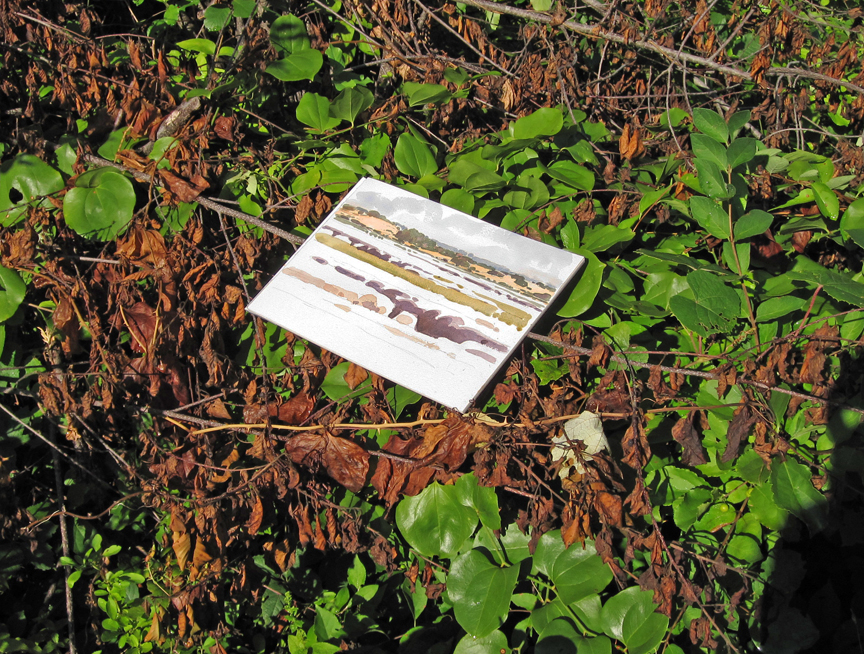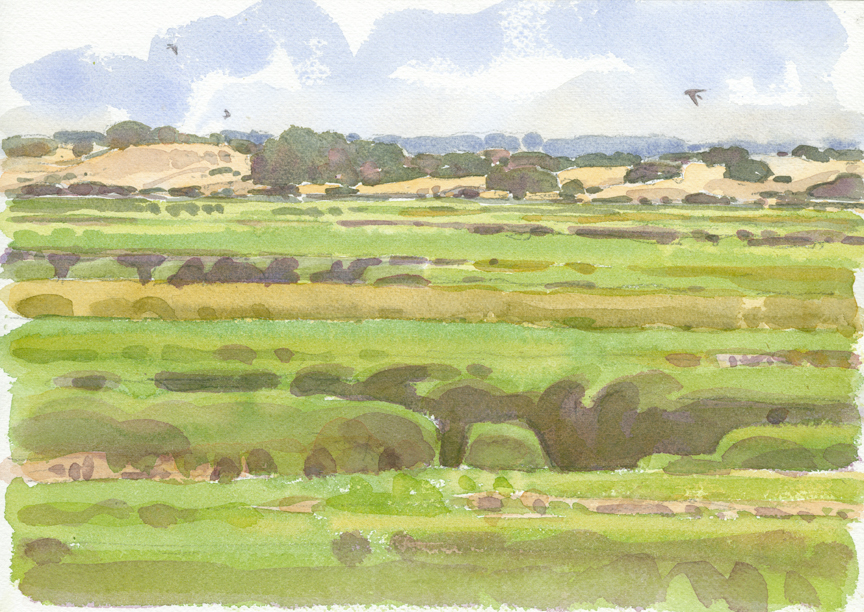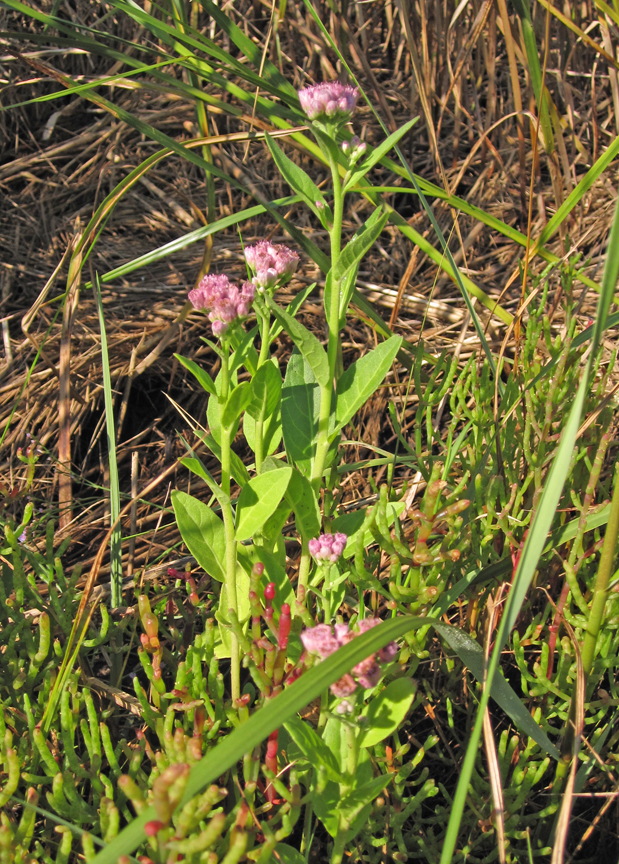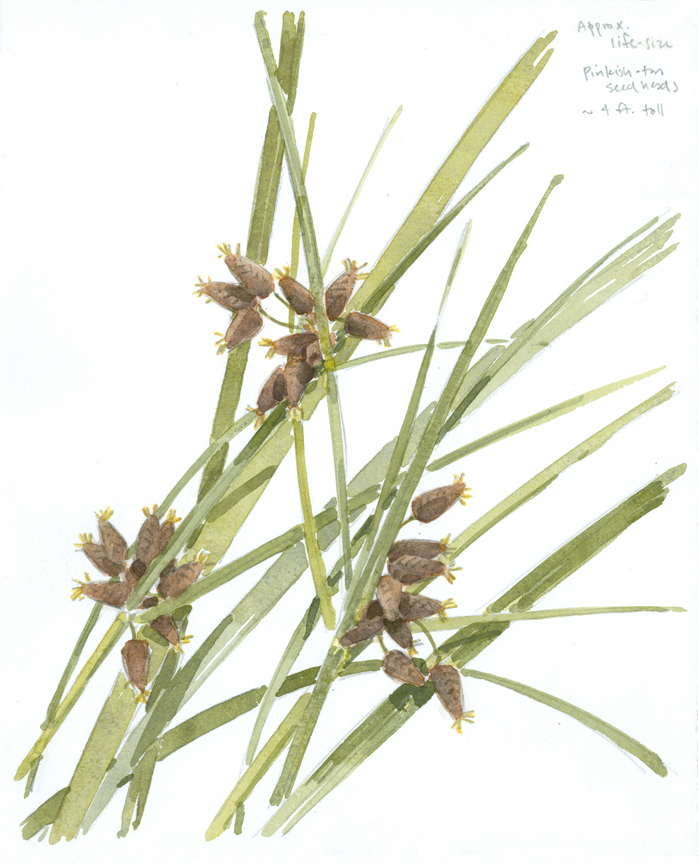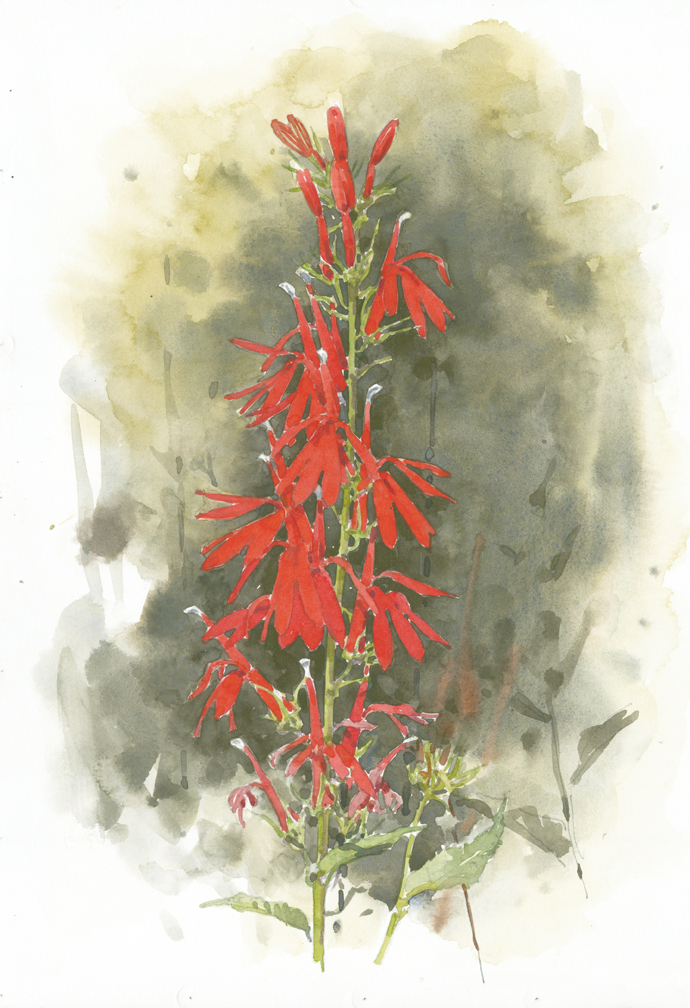This is from a series of posts by MABA resident artist Barry Van Dusen
Barnstable Great Marsh Wildlife Sanctuary, Barnstable on August 16, 2015
I had hoped to get down to Cape Cod last week, but car troubles put my Toyota in the garage for a few days, and by the time I finally get underway a heat wave has settled over New England, with high humidity and temperatures in the 90s. To try and beat the heat, I get an early start and arrive at Barnstable Great Marsh Wildlife Sanctuary by 7:30 am.
A short hike through a forest of oak, cedar, cherries and pines brings me to a small clearing next to an abandoned cabin. A break in the foliage here supplies an elevated view of the marsh, with a backdrop of Sandy Neck in the distance. The Barnstable Great Marsh is the largest salt marsh on Cape Cod, covering more than 3,000 acres.
The clearing is a nice shady spot at this time of the morning, so I set up my scope and pack chair. I spot an osprey, egrets, herons, laughing gulls and shorebirds out on the marsh, but they’re too distant to draw or paint, so I decide to do a landscape. With my 25x scope I can “project myself” out onto the marsh, bringing the dunes of Sandy Neck much closer, and this makes for an appealing composition.
As I start to lay down the first washes of color I realize that the very high humidity is going to have an effect on my painting. High humidity can be both a blessing and a curse to the watercolorist. The washes of color dry very slowly, so there’s more time to develop the wet passages. I can take my time developing smooth color gradations and soft edges – things which I usually have to hurry with before the paper dries. At some point, however, I need those first washes to dry, so I can paint additional layers over them (what watercolorists refer to as glazing.) Today, it’s taking FOREVER for those first washes to dry! I lay my half-finished painting on a bush in the sun, and wander down the path to the edge of the marsh. By the time I return to the clearing the washes have finally dried and I can get on with my work. As I’m painting with the scope, small birds zip back and forth through my field of view – swallows – and as a final touch, I add them to my painting.
Next, I move down to the edge of the marsh to do some studies of some of the plants I’d noticed there. Growing out on the marsh is an attractive flowering plant that I later identify as saltmarsh fleabane.
I’m also intrigued by the bulrushes growing where the woods give way to the marsh grasses. These are robust, 4-foot tall grasses with long curving blades and heavy clusters of cone-shaped seed heads.
It’s getting pretty hot, now, especially in the sun, so I do some exploring along the the shady trails of the sanctuary. I flush a green heron at Otter Pond, and then find a superb stand of cardinal flowers at the outflow of spring-fed Cooper Pond. I had not expected to find cardinal flowers growing wild on Cape Cod, since I most often encounter them far from the coast along cool, tumbling streams in upland forests. But they seem quite happy here, with a second handsome cluster of plants growing further west along the shore. Unfortunately the flower stalks are surrounded on all sides by a thick growth of poison ivy, so I content myself to do some drawing from a distance thru my telescope, and complete this watercolor later in my studio.
On my way back to the car, I stop to marvel at a wildly contorted cherry tree growing along the trail. In one place the limbs of the tree seem to have tied themselves into a big knot! It deserves, and gets, a study in my sketchbook.


